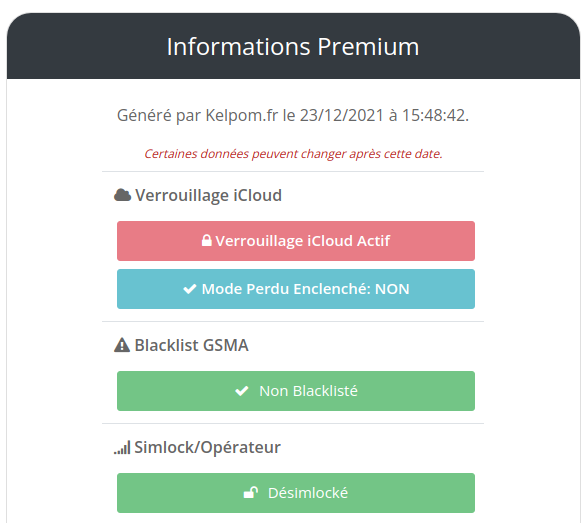Kelpom provides a range of Premium services allowing one to find out if an iPhone or an Android device is blacklisted or not. Here, we are going to take a closer look at how the GSMA database which stores all the stolen and lost devices in the world works and who is in charge of managing it.
The GSMA, a worldwide organisation

As its name indicates, the GSM Association (GSMA for short) is an association of the world’s mobile operators, counting more than 750 members according to its 2019 Annual Report.
By affiliating the mobile industry’s actors, the GSMA represents its members interests on a global scale and promotes an auspicious environment for the development of their activities. As a worldwide organisation, the GSMA which is headquartered in London, is present on every single continent.
The IMEI Number
On top of its representation mission, the GSMA is also in charge of allocating TAC numbers (Type Allocation Code) used to identify device models. For instance, the TAC number 35266891 designates an iPhone 13 Pro (A2483) while 35839868 is for a Samsung Galaxy S1 5G (SM-G991B/DS).
This TAC number constitutes the first 8 digits of another number we are very familiar with at Kelpom: the IMEI number (International Mobile Equipment Identity). The IMEI is formed by the TAC, followed by a unique 6-digit serial number plus one last digit which is used for validation purposes with the Luhn Algorithm. Those 15 digits uniquely identify any cellular device in the world, no matter what the brand is.
It is important to note that the IMEI number is only used for devices that can connect to cellular networks. As such, an iPad WiFi + Cellular will have an IMEI whereas the same model of iPad but WiFi only won’t. On the other hand, the IMEI is used not only for mobile phones but also 4G hotspots, automobile equipment as well as devices designed for IOT (Internet Of Things) or M2M (Machine To Machine) applications. Interestingly, a “Dual SIM” cell phone will be equiped with two distinct IMEIs.
Tip: You can get your phone’s IMEI number simply by dialing the following code on your keypad: *#06#
The “Blacklist”
The IMEI, being a unique identifier for each and every device, makes it possible to create a database storing stolen and lost handsets. That’s exactly what the GSMA did. We’re obvisously talking about the infamous “Blacklist” which is under the GSMA’s management. That database allows mobile operators who are part of the association to access its information and block stolen devices from being used on their network. The end goal is to combat theft, fraud or any other criminal activities involving stolen devices.
The process to register a phone on the blacklist depends first and foremost on the end user and his mobile operator: the customer has to alert his carrier which in turn is in charge of instructing the GSMA to add the IMEI to the database. Unfortunately, as mentioned on the GSMA’s own website, not every operator uses the information made available in the database which is arguably a weakspot for this system.
It is worth noting that police authorities don’t play any role in the registration of stolen devices in the GSMA’s database. In case of theft or loss it is imperative to file a complaint with BOTH the carrier and the police. The IMEI number is required in both cases. Also, if your handset is insured, the IMEI will be asked by the insurance company as well.
For these reasons, it is important to make sure that you can retrieve the IMEI in case something bad happens to your phone. If you have activated Find My iPhone (or Find My Device for Android phones) you can easily access your IMEI through Apple’s iCloud.com or Google’s website. Kelpom also provides a free service that allows you to register your devices’ IMEI and Serial Numbers.
Kelpom to the rescue!
When shopping for a used phone it is of paramount importance to make sure that the device is not registered in the GSMA’s blacklist database. You could end up with a phone that won’t be able to place calls otherwise.
Fortunately, to help mitigate risks in those situations, Kelpom offers Premium services to check the blacklsit status in a matter of seconds. This information is included in the Premium Classic and Premium HD reports but is also available “A La Carte” through the “Expert” interface. It is worth noting that Kelpom provides the blacklist status information for both Apple and Android devices.
Here are screen captures of what the Premium reports look like for a “Clean” device and a “Blacklisted” device:


Conclusion
The GSMA is arguably a not very well-known organisation as its main mission is to serve mobile network operators’ interests. That said, as the entity in charge of the database storing lost and stolen cell phones, the GSMA provides a very useful tool for consumers shopping in the second hand market for devices to avoid the numerous scams.





